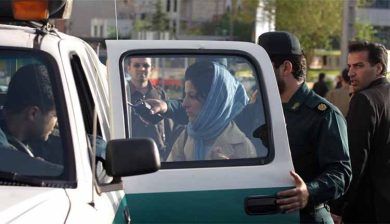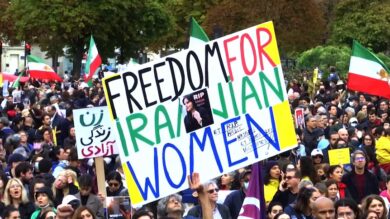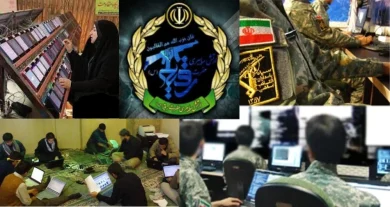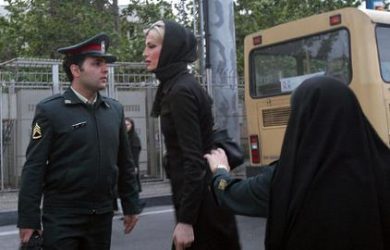The Iranian diaspora has become a powerful force in the global movement for freedom, justice, and human rights in Iran. In response to decades of repression by the Iranian regime, particularly under the Islamic Revolutionary Guard Corps (IRGC), Iranians living abroad have mobilized to raise awareness, apply international pressure, and provide resources to activists on the ground. Their efforts have intensified following major events like the Women, Life, Freedom protests sparked by the death of Mahsa Amini in 2022. This article explores the role of diaspora activism, the strategies employed by Iranians abroad, and the impact of their efforts on the fight for freedom and justice in Iran.
1. The Role of the Iranian Diaspora in Advocacy
The Iranian diaspora, scattered across countries such as the United States, Canada, Germany, France, and Australia, has established itself as a major advocate for human rights in Iran. This global community includes activists, academics, artists, and professionals who work to highlight the regime’s abuses and support grassroots movements.
A. Raising Global Awareness
• Diaspora communities organize protests and rallies in major cities to draw international attention to the struggles of activists in Iran.
• They collaborate with journalists, media outlets, and human rights organizations to report on repression, including protests, arrests, and human rights violations.
B. Advocacy with Governments and Institutions
• Iranian diaspora groups lobby politicians, diplomats, and international bodies such as the United Nations and European Union to apply pressure on the Iranian regime.
• These efforts have contributed to sanctions on the IRGC and high-ranking officials responsible for repression and violence.
2. Key Areas of Activism
A. Protests and Public Demonstrations
• Large-scale demonstrations have taken place in cities like Berlin, London, Paris, Washington, D.C., and Toronto in solidarity with protests in Iran.
• These protests often feature symbols of resistance, including hijab removals, artistic performances, and memorials for victims of state violence.
B. Digital Activism
• The Iranian diaspora plays a crucial role in amplifying messages through social media, using hashtags such as #WomenLifeFreedom and #MahsaAmini.
• Digital activists combat disinformation spread by the Iranian regime and share verified news and testimonies from protesters in Iran.
C. Humanitarian and Legal Support
• Diaspora organizations provide financial aid to families of imprisoned or killed protesters.
• They also support legal defense funds for detainees and work with international lawyers to document human rights abuses.
3. Stories of Diaspora Activists
A. Roya’s Story: Organizing Global Protests
Roya, an Iranian-American activist, has been at the forefront of organizing protests in New York City.
• “We are their voice when they cannot speak. Our goal is to keep the world’s attention on Iran’s human rights crisis.”
B. Hamid’s Story: Combating Digital Censorship
Hamid, a cybersecurity expert in Germany, helps Iranian activists access VPNs and encrypted communication tools.
• “The regime relies on censorship to silence dissent. We provide tools to ensure activists can stay connected and safe.”
C. Leila’s Story: Amplifying Voices in Media
Leila, a journalist in France, collaborates with Persian-language news outlets to report on Iran’s protests.
• “The stories of those who have suffered under the IRGC must be heard. We ensure their voices reach the world.”
4. Impact of Diaspora Activism
A. International Sanctions and Diplomatic Pressure
• Advocacy efforts by diaspora groups have influenced the imposition of targeted sanctions on IRGC officials and state institutions responsible for human rights abuses.
• Countries have responded with diplomatic condemnation, including resolutions in the UN Human Rights Council and European Parliament.
B. Media Attention and Public Awareness
• Global media coverage of Iranian protests has increased due to diaspora-led initiatives, helping to sustain international awareness of the movement.
• Public support for Iranian activists has grown, with celebrities, politicians, and activists worldwide expressing solidarity.
C. Support for Activists on the Ground
• Financial and technical resources provided by the diaspora have helped activists in Iran overcome resource shortages and digital restrictions.
• Diaspora networks facilitate access to legal representation, medical care, and psychological support for victims of repression.
5. Challenges Faced by Diaspora Activists
A. Threats and Intimidation
• The IRGC has targeted diaspora activists with intimidation tactics, including cyberattacks, harassment, and surveillance.
• Some activists have reported death threats and attempted assassination plots orchestrated by Iranian intelligence operatives abroad.
B. Disinformation Campaigns
• The Iranian regime spreads propaganda and false narratives to discredit diaspora activists, portraying them as foreign agents or traitors.
• Activists must constantly counter misinformation while maintaining credibility with global audiences.
C. Coordination and Resources
• Despite their impact, diaspora groups often face challenges in coordinating efforts across different countries and securing sufficient resources.
• Maintaining momentum for long-term advocacy can be difficult as media attention shifts to other global issues.
6. Strengthening the Global Movement
A. Building Alliances with International Organizations
• Diaspora activists can strengthen partnerships with human rights groups, nonprofits, and diplomatic missions to expand their influence.
• Collaborative efforts can increase advocacy capacity and provide legal expertise for holding the Iranian regime accountable.
B. Expanding Digital Security Training
• Providing cybersecurity training and tools to activists can help protect them from surveillance and hacking by the IRGC.
• Tech companies and governments should support initiatives that improve internet access and counter censorship.
C. Sustaining Media and Cultural Campaigns
• Promoting documentaries, art projects, and public events can keep global audiences engaged with Iran’s human rights struggles.
• Diaspora artists and writers can use cultural diplomacy to highlight stories of resistance and hope.
Conclusion
Iranian diaspora activism has become an essential part of the fight for freedom, justice, and human rights in Iran. By organizing protests, amplifying voices, and pressuring governments to act, the diaspora has demonstrated the power of global solidarity. Despite facing intimidation and challenges, these activists continue to stand in support of their compatriots in Iran, inspiring hope for a brighter future.
Join Our Newsletter!
Stay informed with the latest updates, news, and ways to take action in the fight for justice and global security. Sign up now to get updates delivered straight to your inbox!





